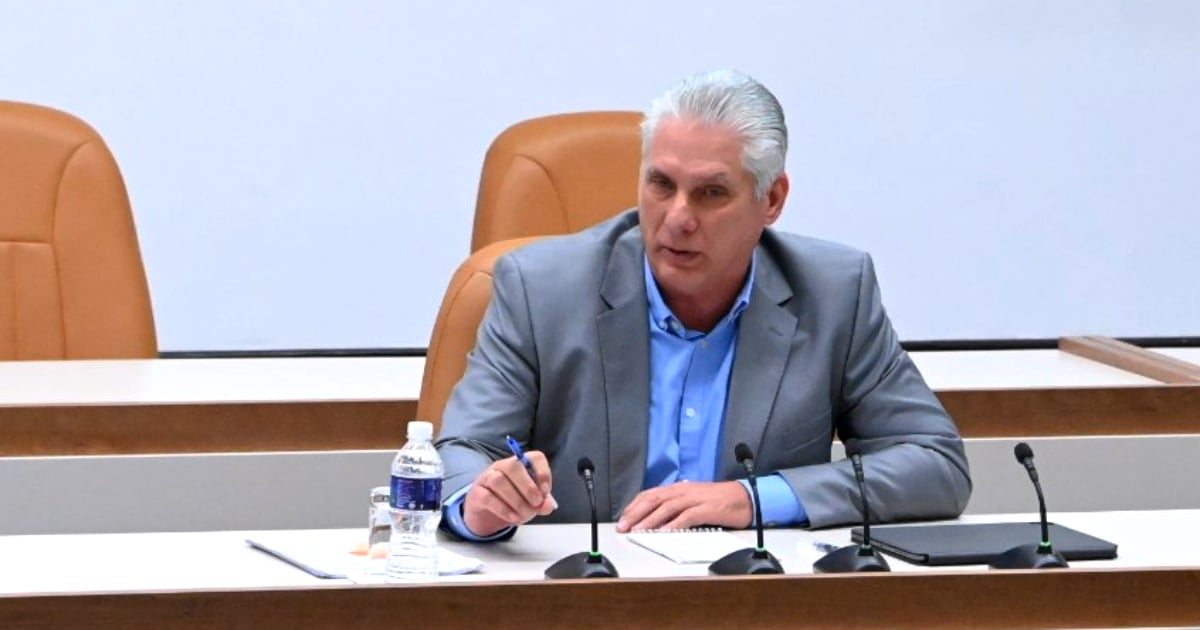
The “cadre movement” started byMiguel Diaz-Canel did not affect the Ministry of Energy and Mines (MINEM), nor theElectrical Union of Cuba (UNE), state entities that,despite its evident crisis and inefficiency, have become protagonists of a new plan of the ruler.
This was evident in the last meeting organized in the Palace, in which Díaz-Canel presented his strategy for the “energy transition in Cuba” in a video conference with businessmen from the territories.
According to the governor, a team with representation from differentstate entities and experts from universities “are working on a new policy proposal for the energy transition and its regulatory framework.”
The goal, he explained, is thatCuba will be able to generate 29 percent of electricity from renewable energy sources (RES) by 2030.
According to experts from Cubaenergía, an entity belonging to the Ministry of Science, Technology and Environment,95% of the Cuban energy matrix is based on fossil fuels and 5% on renewable energies (data April 2021).
Díaz-Canel's strategy therefore represents a notable increase of almost 25% of the presence of the RES in the energy matrix of the Island.And no less than within a period of six years.
“It is achievable and it is being done,” said the Minister of Energy and Mines at this Saturday's meeting.Vicente de la O Levy, according to the sitePresidency of Cuba.
For his part, Díaz-Canel emphasized energy efficiency and the change in the generation matrix to overcome dependence on fossil fuels, to whose purchase the State allocates an important part of the budget.
“We have to import high amounts of fuel, and as we resolve the energy issue we will have more foreign currency for other things that today are practically subordinated to the fuel that is purchased for electricity generation, which does not allow us to support production processes.” , he indicated.
Despite the primary logic of its strategy, its ambitions are even greater.By the 2030s, Cuba must achieve one hundred percent generation based on national energy sources (FNE), that is, crude oil and accompanying gas.
In that decade, the RES must also reach a 50% contribution to the national energy matrix, which, added to the previous one, will make the Cuban regime reach one hundred percent of energy sovereignty.
The final goal of the “continuity” government is that by 2050 Cuba has completed the energy transition, and is capable of producing one hundred percent of electricity with renewable energy sources.
“This is a very necessary issue for the country, and also a very current issue,” Díaz-Canel stressed in a similar meeting held in mid-September, in which the also first secretary of the Communist Party warned that this change of paradigm is being produced worldwide, driven by neoliberal concepts, so Cuba had the challenge of interpreting andassume these transformations from the perspective of socialist construction.
there was not“frame movements” in the UNE or in the management of the MINEM. In Cuba, prolonged and frequent blackouts continue to occur, but also prolonged and “fruitful” meetings in the air-conditioned rooms of the Palace to analyze, propose and “move forward”… just as progress understands the “continuity” of the totalitarian communist regime.
What do you think?
SEE COMMENTS (6)Filed in: